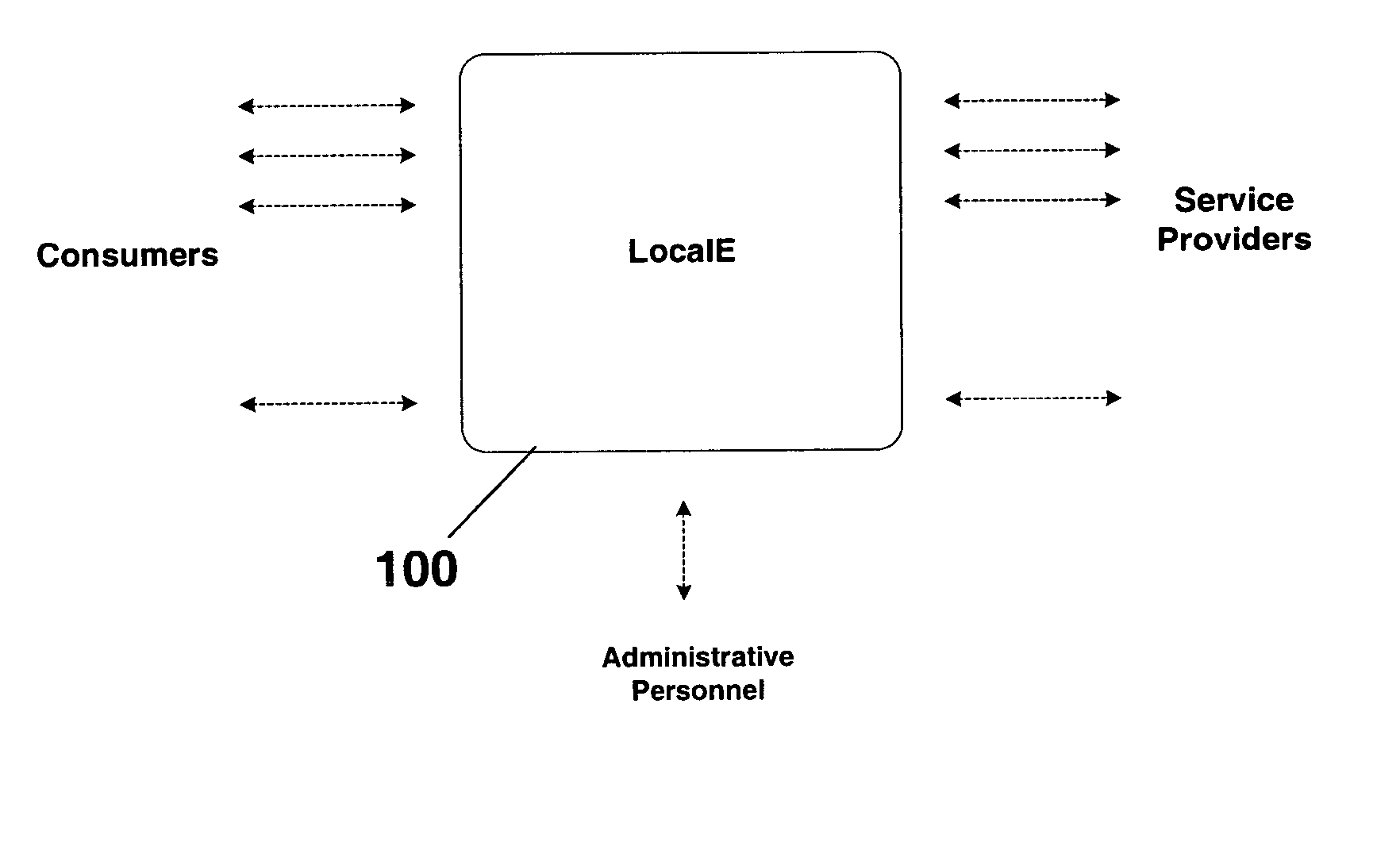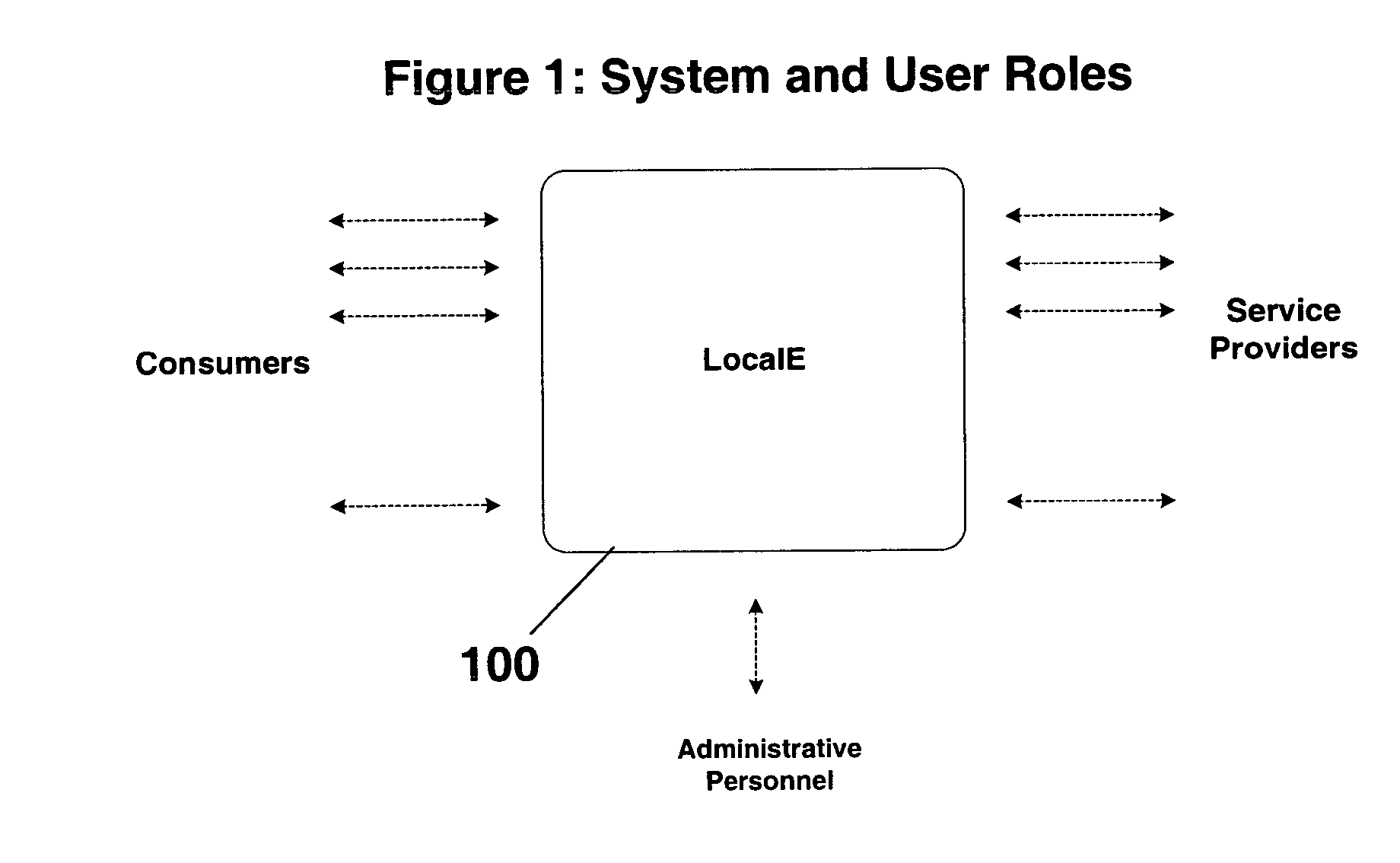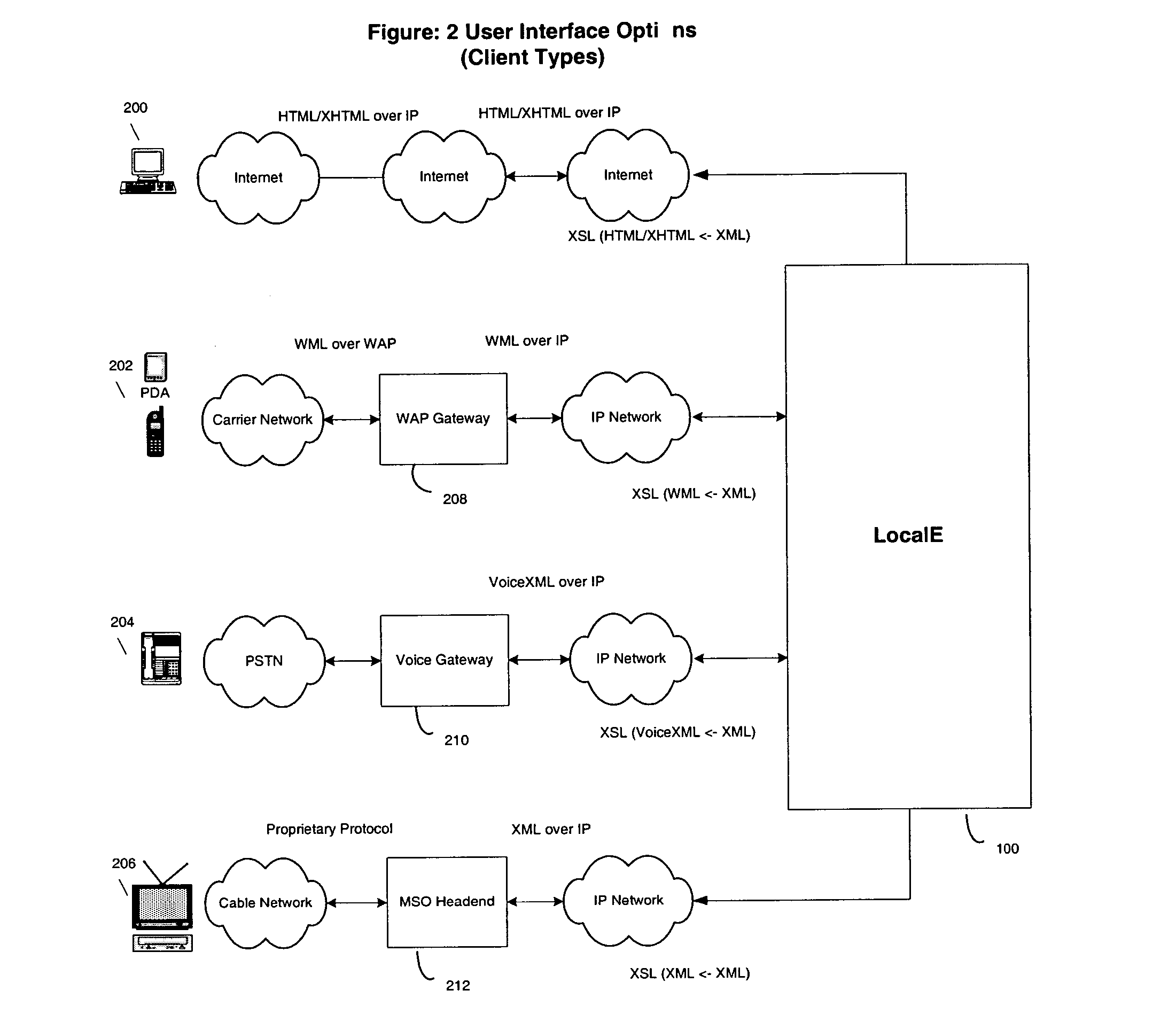System and method for matching local buyers and sellers for the provision of community based services
a technology for matching local buyers and sellers and community based services, applied in the field of system and, can solve the problems of not providing any information, not making their ratings accessible to everyone, and users often having to sift through long lists of service providers
- Summary
- Abstract
- Description
- Claims
- Application Information
AI Technical Summary
Benefits of technology
Problems solved by technology
Method used
Image
Examples
Embodiment Construction
A detailed description of an exemplary embodiment of the present invention will now be described with reference to FIGS. 1-24. Although this description provides detailed examples of possible implementations of the present invention, it should be noted that these details are intended to be exemplary and in no way delimit the scope of the invention.
Definitions:
DTV (Digital TV): A digital television standard for the U.S. approved by the FCC in 1996 and developed by the Advanced Television Systems Committee (ATSC). In November 1998, DTV debuted in major U.S. cities. In order to receive DTV, one needs a digital TV set or a set-top box for an existing analog TV.
ebXML (Electronic Business XML): An XML-based set of definitions for electronic transactions and business collaboration. Based on work done by the United Nations Centre for Trade Facilitation and Electronic Business (UN / CEFACT), ebXML provides descriptors for modeling business processes that includes the definition of softwar...
PUM
 Login to View More
Login to View More Abstract
Description
Claims
Application Information
 Login to View More
Login to View More - R&D
- Intellectual Property
- Life Sciences
- Materials
- Tech Scout
- Unparalleled Data Quality
- Higher Quality Content
- 60% Fewer Hallucinations
Browse by: Latest US Patents, China's latest patents, Technical Efficacy Thesaurus, Application Domain, Technology Topic, Popular Technical Reports.
© 2025 PatSnap. All rights reserved.Legal|Privacy policy|Modern Slavery Act Transparency Statement|Sitemap|About US| Contact US: help@patsnap.com



